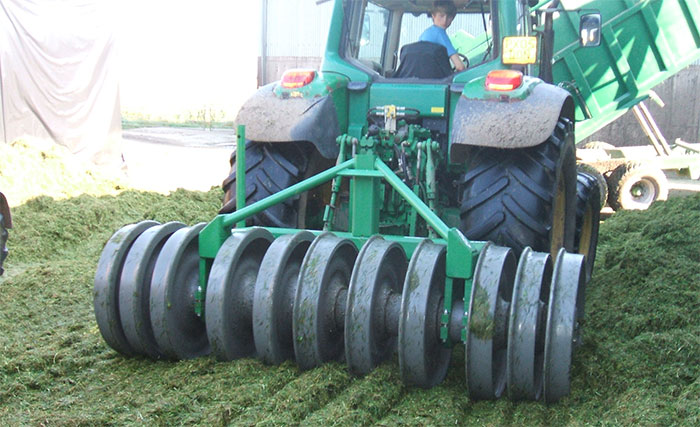
Silage makers can now source all their ensiling needs from one firm for the first time, maximising their chances of making top-quality forage.
Last year's appalling weather meant many farmers were left with sub-standard silage, highlighting the importance of attention to detail at every stage of the process.
The weather really was against farmers last year, but by using the most effective available ensiling aids, some still managed to produce good quality forage, says silage specialist Kelvin Cave.
With concentrate feed costs at historic highs, it is more important than ever that farmers make the most of their forage crops, and that means preserving as much nutrient value as possible throughout the ensiling process. Farmers cannot afford to continue losing the 20% or more of ensiled dry matter every year that they have accepted as normal.
Following the recent launch of ClampTiles, Kelvin Cave Ltd now covers every step of the ensiling process; from Safesil preservative, applied while cutting; to ClampNet, which protects against pests and spoilage in the clamp.
"Time and again, we hear from farmers that the key to top quality silage is to get every stage of the process right," said Cave.
"That means cutting at the right time, compacting the forage to eliminate oxygen, sealing it correctly, and managing the fermentation process to ensure minimal dry matter losses in the clamp and during feed-out."
"However, as we saw last year, the British weather doesn't always play ball, so having a little extra help in the form of a silage preservative can be extremely beneficial," he added.
"Using carefully designed tools like the SilaPactor to increase silo compaction density, and ClampFilm or O2 barrier to eliminate shoulder waste means virtually every penny's worth of valuable forage ends up in the cows."
Completing the package are ClampNet and ClampTiles, which make clamp management neater and more effective.
"There is no need for piles of old tyres, which are usually magnets for dirty water, midges and rats," said Cave.
"They are also potentially dangerous to stock as the wires in the tyres break down, and have never been a really effective way of weighing down silage sheets.
"As farmers ourselves, we run a herd of Aberdeen Angus cattle in Somerset - everything we design has the farmer in mind, so it's effective and easy to use," he added.
"Money, particularly in the dairy industry, is tight at the moment, so every investment a farmer makes must stand up financially. Forage is one of farmers' most valuable and essential assets, which can protect against fluctuations in feed supplies and input costs. It's essential that they make the most of it."
